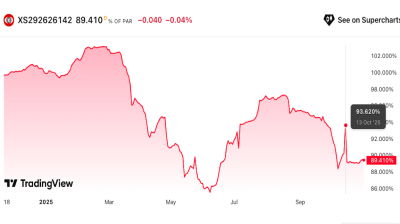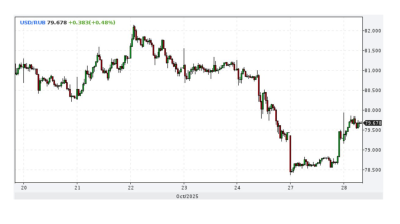Hungarian inflation eased from 4.1% in July to 3.4% (chart) in August, its lowest figure since May 2021 and below the 3.7% forecast, the Central Statistics Office (KSH) announced on September 10.
Core inflation, which excludes volatile fuel and food prices, dropped from 4.7% to 4.6%.
Consumer prices were flat compared to July, compared to a prediction of a 0.2% rise.
Food prices rose 2.4% in annual terms and were unchanged compared to July. Many analysts expected food prices to grow at a steeper rate after the mandatory discounts were phased out in July. Another factor for the weaker-than-expected inflation was the 4.3% contraction in household energy prices in annual terms and 0.1% month-on-month.
Consumer durable prices fell but services prices remained elevated, rising 9.5% year-on-year and by 0.4% compared to July. On a monthly basis, however, this represents a moderation, which could be linked to weaker consumer demand.
Still, the service sector accounted for three-quarters of the annual increase in consumer prices.
National Economy Minister Marton Nagy said disinflation in food prices was driven by a significant decline in farm gate prices. He pointed to the impact of government measures in curbing inflation such as an online price comparison platform, which would remain in place.
Persistently low inflation and strong wage growth translates into higher real wages, which is good for families and businesses, boosting consumer confidence and supporting an increase in consumption, he added.
The stabilisation of the inflation rate at current levels could ease households’ caution as the purchasing power of wages rises, which could stimulate economic growth, commented Daniel Molnar, an analyst of Makronom Intezet.
Analysts expect headline inflation to accelerate in the second half, above the central bank’s 4% tolerance band due to the low base and new levies, such as the foreign-currency transaction tax and rising banking levies.
ING Bank chief economist Peter Virovacz noted that subdued domestic demand also played a part in the lower headline figure but projected that inflation would accelerate to 4.8% by December. This is however lower than ING’s previous forecast of 5.0-5.5%.
According to Virovacz, inflationary risks for 2025 are rising, driven by the projected steep increase in the minimum wage, and the rising purchasing power of wages, which point to rising consumption. Recent tax measures, and the extra banking charges, are also likely to feed into consumer prices.
The fresh inflation data will support central bank policymakers to cut the base rate by 25 basis points at the September rate-setting meeting, according to analysts, who note that the MNB will also carefully follow developments on the currency markets as steeper rate cuts could make the forint more vulnerable.
The MNB will also have to factor in the decisions of big central banks. According to Virovacz, the central bank could pause in October if the Fed cuts rates by 25bp and the ECB comes out with a hawkish tone after this week’s rate-setting meeting. The majority of analysts expect a 50bp cut for the remainder part of the year from 6.75%.
<iframe width="746" height="419" seamless frameborder="0" scrolling="no" src="https://docs.google.com/spreadsheets/d/e/2PACX-1vShgIFqBFtD3Zmf5zawSbjmAIKXKL_mTbnltrtWjCdcJzvNhHByYzLbvoY38NTVTXAfx5eZ9zMXYItR/pubchart?oid=180979328&format=interactive"></iframe>
Data

Czech growth accelerates as domestic demand-side pressure builds
The Czech economy delivered an unexpected acceleration in the third quarter, marking a clear shift from its earlier position as a regional underperformer to one of Central and Eastern Europe’s fastest-growing economies.

Eurobonds of Istanbul-listed Zorlu units offer attractive yields amid rating downgrades and no default expectation
Debut paper currently offering 14-15% yield.

Ruble strengthens as sanctioned oil companies repatriate cash
The Russian ruble strengthened after the Trump administration imposed oil sanctions on Russia’s leading oil companies, extending a rally that began after the Biden administration imposed oil sanctions on Russia in January.

Russia's central bank cuts rates by 50bp to 16.5%
The Central Bank of Russia (CBR) cut rates by 50bp on October 24 to 16.5% in an effort to boost flagging growth despite fears of a revival of inflationary pressure due to an upcoming two percentage point hike in the planned VAT rates.




